ECONOMIC WEEK AHEAD: Will stronger rand, Fed moves ward off hike?
by Claire Bisseker,
2016-03-14 05:39:32.0
WILL the hawks on the monetary policy committee carry the day and impose another interest rate hike on a stalling economy is this week’s big question.
The overwhelming consensus among private sector economists is that the committee will leave rates on hold after January’s hefty 50-basis points hike, which took the repo rate to 6.75%.
Since then, changing global and domestic economic conditions may have tempered the need for aggressive hikes this year.
Nomura economist Peter Attard Montalto is one of the few who expect the committee to hike rates a further 25 basis points. "It’s a tug of war between (on one hand) a more benign inflation path and a strong rand, (and on the other) a range of bearish factors including inflation expectations," he said.
He expects the Reserve Bank to reduce its oil price and rand assumptions by about 5% while its electricity price assumptions should be docked by about three percentage points after the regulator’s decision to award Eskom a 9.4% tariff hike for the 2016-17 fiscal year instead of 16.6%.
These factors will be offset by the fact that the consumer price index leapt from 5.2% in December to 6.2% in January, breaching the 3% to 6% inflation target band for the first time in 17 months. Domestic food prices also remain high.
Bureau for Economic Research economist Hugo Pienaar nevertheless thinks there is scope for the Bank to leave rates unchanged.
In addition to the stronger rand, Mr Pienaar notes that many expect the US Federal Reserve to embark on a less aggressive interest rates course this year than had previously been thought, while the European Central Bank has increased its monetary stimulus.
At the same time, SA’s growth outlook remains poor while fiscal policy has become tighter. "All of this reduces the pressure on the Bank so we expect it to be as unaggressive as possible," he said.
The financial markets are pricing in about a cumulative 75 basis points in rate hikes by year-end.
The release of retail sales data by Statistics SA on Wednesday will be watched for signs of whether or not consumer spending is beginning to falter after December’s strong showing.
Retail trade sales rose a surprising 4.1% year on year in December, the highest since 2014.
Economists expect retail sales to slow this year given low consumer confidence, subdued credit growth, rising inflation and interest rates and probable job cuts.
"The next two years are going to be a tougher phase for most households, certainly compared with the relative buoyancy many households experienced in the years leading up to the global financial market crisis," warned Stanlib chief economist Kevin Lings.
Stats SA’s motor trade sales for January come out on Thursday.
The latest National Association of Automobile Manufacturers of SA figures showed new-vehicle sales were down 6.9% in January from a year earlier.
Had it not been for strong demand by rental firms, this figure would probably have plunged into double digits.
Analysts expect full-year new car sales to shrink for a third successive year by as much as 10%.
On Wednesday Moody’s Investors Service is expected to arrive in SA for its annual review of the country’s credit rating, with junk status possibly not far off.
A downgrade by Moody’s would put its credit rating in line with that of the other two major agencies, Fitch and Standard & Poor’s.
Finance Minister Pravin Gordhan and other government officials will be expected to try to convince Moody’s otherwise.
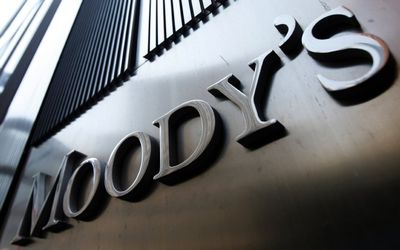
Picture: REUTERS
WILL the hawks on the monetary policy committee carry the day and impose another interest rate hike on a stalling economy is this week’s big question.
The overwhelming consensus among private sector economists is that the committee will leave rates on hold after January’s hefty 50-basis points hike, which took the repo rate to 6.75%.
Since then, changing global and domestic economic conditions may have tempered the need for aggressive hikes this year.
Nomura economist Peter Attard Montalto is one of the few who expect the committee to hike rates a further 25 basis points. "It’s a tug of war between (on one hand) a more benign inflation path and a strong rand, (and on the other) a range of bearish factors including inflation expectations," he said.
He expects the Reserve Bank to reduce its oil price and rand assumptions by about 5% while its electricity price assumptions should be docked by about three percentage points after the regulator’s decision to award Eskom a 9.4% tariff hike for the 2016-17 fiscal year instead of 16.6%.
These factors will be offset by the fact that the consumer price index leapt from 5.2% in December to 6.2% in January, breaching the 3% to 6% inflation target band for the first time in 17 months. Domestic food prices also remain high.
Bureau for Economic Research economist Hugo Pienaar nevertheless thinks there is scope for the Bank to leave rates unchanged.
In addition to the stronger rand, Mr Pienaar notes that many expect the US Federal Reserve to embark on a less aggressive interest rates course this year than had previously been thought, while the European Central Bank has increased its monetary stimulus.
At the same time, SA’s growth outlook remains poor while fiscal policy has become tighter. "All of this reduces the pressure on the Bank so we expect it to be as unaggressive as possible," he said.
The financial markets are pricing in about a cumulative 75 basis points in rate hikes by year-end.
The release of retail sales data by Statistics SA on Wednesday will be watched for signs of whether or not consumer spending is beginning to falter after December’s strong showing.
Retail trade sales rose a surprising 4.1% year on year in December, the highest since 2014.
Economists expect retail sales to slow this year given low consumer confidence, subdued credit growth, rising inflation and interest rates and probable job cuts.
"The next two years are going to be a tougher phase for most households, certainly compared with the relative buoyancy many households experienced in the years leading up to the global financial market crisis," warned Stanlib chief economist Kevin Lings.
Stats SA’s motor trade sales for January come out on Thursday.
The latest National Association of Automobile Manufacturers of SA figures showed new-vehicle sales were down 6.9% in January from a year earlier.
Had it not been for strong demand by rental firms, this figure would probably have plunged into double digits.
Analysts expect full-year new car sales to shrink for a third successive year by as much as 10%.
On Wednesday Moody’s Investors Service is expected to arrive in SA for its annual review of the country’s credit rating, with junk status possibly not far off.
A downgrade by Moody’s would put its credit rating in line with that of the other two major agencies, Fitch and Standard & Poor’s.
Finance Minister Pravin Gordhan and other government officials will be expected to try to convince Moody’s otherwise.


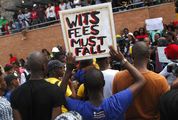
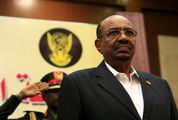
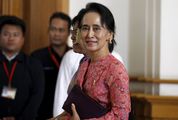



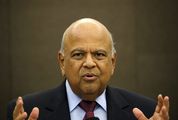
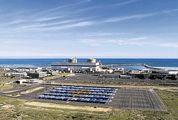


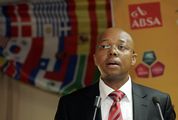











Change: -0.42%
Change: -0.35%
Change: -0.17%
Change: 0.14%
Change: -2.58%
Data supplied by Profile Data
Change: -0.51%
Change: -0.23%
Change: -0.42%
Change: 0.00%
Change: -0.56%
Data supplied by Profile Data
Change: 2.52%
Change: 1.50%
Change: 2.52%
Change: 3.31%
Change: 1.78%
Data supplied by Profile Data
Change: -0.28%
Change: 0.00%
Change: -0.46%
Change: 0.18%
Change: -3.00%
Data supplied by Profile Data